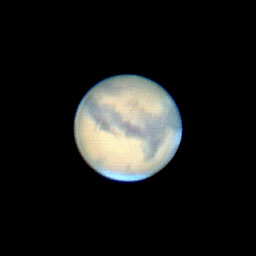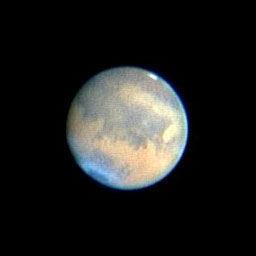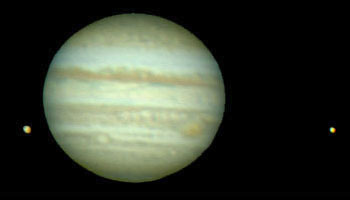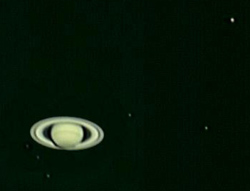The best planetary camera available to amateurs is not some expensive camera costing thousands of dollars but a $150 webcam made originally for videoconferencing. With the Philips ToUcam Pro and special processing techniques it is possible to capture images that amateurs only dreamed of before.
 Mars 06 Nov 2005
Mars 06 Nov 2005
Location: Tucson, AZ (110d55'W 32d15'N)
Time: 2352MST 5Nov2005 (0652UT 6Nov2005)
Conditions: Seeing moderate (5/10) with high frequency blurring of the image
Optics: 11" Celestron @ f/20 (2x barlow or 5600mm EFL)
Camera: Philips ToUCam Pro w/IR blocking filter
Processing: 600 of 1000 frames stacked with Registax
Mars longitude 255°, south is up, note the blue haze of morning clouds over Syria, the south polar cap is just a speck.
 Mars 23 Oct 2005
Mars 23 Oct 2005
Location: Tucson, AZ (110d55'W 32d15'N)
Time: 23Oct2005 (0747UT 23Oct2005)
Conditions: Seeing good (7/10)
Optics: 11" Celestron @ f/20 (2x barlow or 5600mm EFL)
Camera: Philips ToUCam Pro w/IR blocking filter
Processing: 400 of 1000 frames stacked with Registax
Mars longitude 50°, south is up, dust storms over Syria and across Argyre clearly visible
 Jupiter 24 Feb 2004
Jupiter 24 Feb 2004
Location: Tucson, AZ (110d55'W 32d15'N)
Time: 24Feb2004
Conditions: Seeing good (8/10)
Optics: 11" Celestron @ f/20 (2x barlow or 5600mm EFL)
Camera: Philips ToUCam Pro w/IR blocking filter
Processing: A single image captured both Jupter and the bright moons.
Visible are the moons Ganymede (left) and Europa (right)
 Saturn 15 Feb 2004
Saturn 15 Feb 2004
Location: Tucson, AZ (110d55'W 32d15'N)
Time: 15Feb2004
Conditions: Seeing good (7/10)
Optics: 11" Celestron @ f/20 (2x barlow or 5600mm EFL)
Camera: Philips ToUCam Pro w/IR blocking filter
Processing: Two separate images taken sequentially, one exposed for the planet and another for the moons, layer back together in Photoshop
Visible are the moons (left-right) Mimas, Enceladus, Dione, Tethys, Rhea and Titan